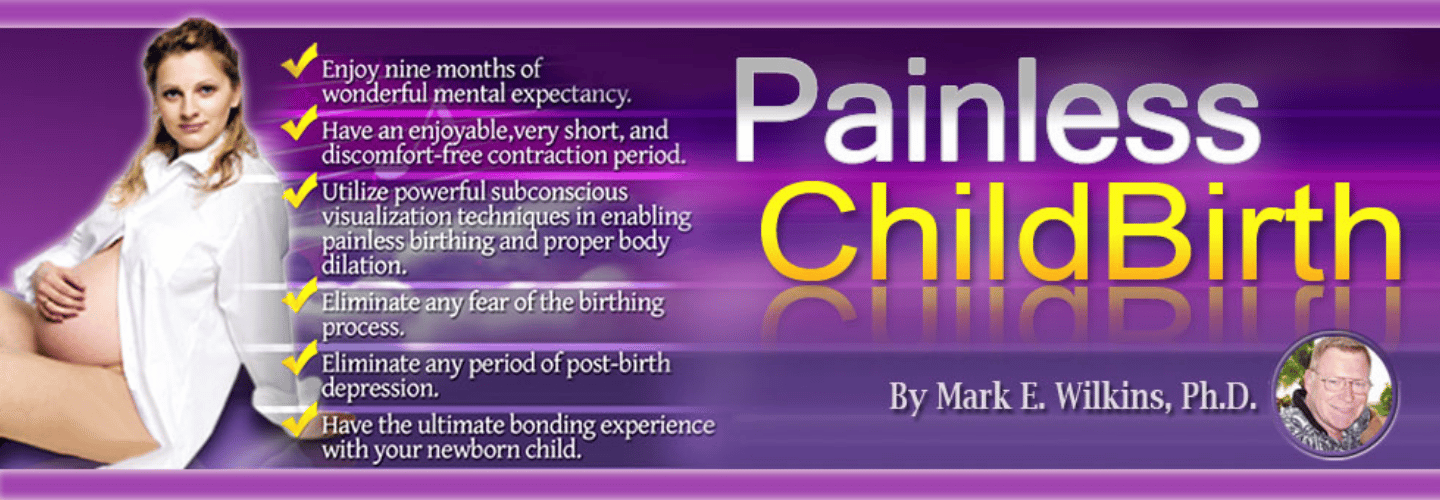
Begin a journey towards pain-free childbirth with the groundbreaking power of hypnosis. Discover how this ancient practice can revolutionize your birthing experience by aiding in pain management and promoting relaxation. Uncover the secrets behind tapping into your mind's potential to transform the perception of pain during labor, potentially reshaping your entire birthing journey. This method offers a unique approach to childbirth that could be the missing piece in your preparation for a serene and empowering delivery.
Understanding HypnoBirthing Principles
In delving into the domain of childbirth without pain, one must grasp the foundational principles that underpin the revolutionary approach of HypnoBirthing.
HypnoBirthing asserts that every woman is a good candidate for a positive birth experience, emphasizing the power of the mind in pain management during labor. By utilizing hypnosis, mothers can tap into their innate ability to relax deeply, allowing for a more natural childbirth process.
The core belief is that conditioning and fear can lead to a self-fulfilling prophecy of pain during labor, hindering the body's natural birthing abilities. Through HypnoBirthing, women are encouraged to release limiting thoughts, foster trust in the birthing process, and promote relaxation to facilitate the natural release of endorphins.
Studies have shown that this approach can reduce the need for drugs and interventions during labor, potentially decreasing the likelihood of C-sections. By understanding and implementing these principles, mothers can work towards a positive and empowering birthing experience.
Techniques for Relaxation and Visualization
Discover the secrets to achieving a serene and empowering birthing experience through mastering the transformative techniques of relaxation and visualization in HypnoBirthing.
During childbirth, hypnosis techniques for relaxation involve directing awareness inwards to cultivate a state of calm amidst the intensity of labor. By practicing visualization techniques, expectant mothers can create positive mental images of the birthing process, effectively reducing fear and tension.
Furthermore, the incorporation of positive affirmations and relaxation techniques in hypnosis promotes a smoother childbirth experience. These techniques facilitate the natural release of endorphins, which aid in pain management during labor.
Self-Hypnosis for Pain Management

Discover the potent connection between the mind and body in managing pain during childbirth through self-hypnosis techniques. By mastering relaxation methods and visualization practices, mothers can find relief and comfort amidst the intensity of labor.
Harness the potential of self-hypnosis to transform the perception of pain into a manageable and even empowering aspect of the childbirth journey.
Mind-Body Pain Connection
Discover the potential for a pain-free childbirth through the powerful practice of self-hypnosis, delving into the profound Mind-Body Pain Connection for effective pain management during labor.
The Mind and Body are intricately linked, and during labor and delivery, this connection plays a vital role in the perception of pain in childbirth. Hypnosis groups often highlight the impact of the mind on physical sensations, allowing women to tap into their innate abilities to cope with and reduce pain naturally.
By utilizing self-hypnosis techniques, such as positive affirmations and visualization, women can enhance their pain tolerance and promote relaxation for a more comfortable natural birth experience.
Embracing the Mind-Body Pain Connection empowers women to approach childbirth with confidence and a sense of control over their bodies.
Relaxation Techniques for Pain
Tapping into the power of self-hypnosis for pain management during childbirth involves focusing in on internal awareness and openness to relaxation suggestions, creating a pathway for a more comfortable and empowered labor experience.
By utilizing the HypnoBirthing technique, individuals can effectively manage labor pain through self-hypnosis. Key aspects of self-hypnosis for pain management include changing perceptions of pain, reducing anxiety levels, and enhancing coping mechanisms.
This approach narrows focus, decreases awareness of external stimuli, and boosts receptiveness to relaxation cues, ultimately promoting a sense of calm and control during the childbirth experience.
Practicing self-hypnosis techniques not only reduces the need for analgesia but also empowers individuals to navigate labor pain with confidence and comfort.
Visualization for Pain Relief
Utilizing visualization techniques in self-hypnosis can greatly enhance pain relief and relaxation during childbirth, offering a powerful tool for managing discomfort and fostering a positive birthing experience. Visualization in self-hypnosis involves creating mental images to promote relaxation and manage pain, helping individuals shift their focus from discomfort to positive sensations.
Research indicates that practicing visualization can reduce anxiety, fear, and the perception of pain during labor, ultimately leading to a more comfortable birth experience. By visualizing a serene and tranquil birthing environment, individuals can trigger the body's relaxation response, easing the discomfort of labor.
Regular practice of visualization techniques trains the mind to respond positively to the sensations of childbirth, potentially resulting in a smoother and pain-free delivery process.
Preparing Mind and Body for Birth

In preparation for childbirth, the HypnoBirthing approach focuses on nurturing the mind and body through relaxation techniques, visualization exercises, and empowering affirmations. This holistic method aims to equip expectant parents with the tools needed to approach labor with confidence and calmness. Here are some key aspects of preparing the mind and body for birth:
- Self-Hypnosis: Practicing self-hypnosis allows individuals to enter a state of deep relaxation, reducing anxiety and promoting a sense of control during labor.
- Breathing Exercises: Learning specific breathing techniques helps in managing pain and staying focused throughout the birthing process.
- Meditation: Incorporating meditation into daily routines can enhance overall mental well-being, aiding in stress reduction and emotional preparation for childbirth.
- Positive Affirmations: Using positive language and affirmations can reframe perceptions of pain, instilling a sense of empowerment and trust in the body's natural abilities.
Research on HypnoBirthing Efficacy
Research on HypnoBirthing efficacy presents compelling evidence from 9 trials involving 2954 women, showcasing the potential benefits of hypnosis in reducing analgesia use during labor. With fewer women requiring pain relief medication, HypnoBirthing emerges as a promising tool for effective pain management during childbirth.
While some areas like normal deliveries show no significant differences, the call for further high-quality research in this field remains paramount.
HypnoBirthing Research Results
HypnoBirthing, a technique gaining recognition in modern childbirth practices, has shown promise in reducing overall analgesia use during labor based on research involving 2954 women across 9 trials. HypnoBirthing practitioners aim to alleviate fear and anxiety, providing a more relaxed birthing experience.
In a small study, childbirth educators noted that women using hypnosis were less likely to require pharmacological pain relief. However, the research highlighted that hypnosis had no significant impact on normal deliveries, satisfaction with pain relief, or coping with labor.
Safety and efficacy of hypnosis for childbirth are essential as it offers a natural approach to anesthesia and aims for a joyful birthing experience.
Hypnosis for Childbirth
Harnessing the power of the mind to redefine the childbirth experience, hypnosis emerges as a groundbreaking approach to pain management during labor. Research on hypnosis for childbirth, including HypnoBirthing classes inspired by Marie Mongan and concepts from Grantly Dick-Read, has involved nine trials with 2954 women.
While hypnosis during labor may reduce overall analgesia use, studies show no significant difference in satisfaction with pain relief or coping compared to control groups. Safety and efficacy of hypnosis for childbirth are vital due to risks associated with pharmacological pain management methods crossing the placenta.
Hypnosis interventions focus on the affective aspects of pain, reducing anxiety, fear, and enhancing mood during labor and delivery. Options for natural pain management include hypnotherapy by a practitioner or self-hypnosis taught to mothers.
Finding the Right HypnoBirthing Class

When choosing the perfect HypnoBirthing class, anticipate exploring a world of relaxation techniques, birth preparation, and community support. Here are some key points to keep in mind when finding the right HypnoBirthing class:
- Curriculum Inclusions: Look for classes that cover calm and pain-free birth experiences, preparing the body for birth, massage techniques, quick relaxation techniques, and bonding with the baby.
- Real-Time Feedback: Opt for in-person classes that offer real-time feedback, allowing for personalized guidance and support throughout the process.
- Supportive Community: Seek out classes that foster a supportive community for birthing individuals, creating a network of encouragement and understanding.
- Comprehensive Approach: Choose classes designed to be thorough, potentially reducing the need for additional birth classes and ensuring a well-rounded preparation for childbirth.
Frequently Asked Questions
Can Hypnosis Reduce Pain in Childbirth?
Hypnosis offers a unique approach to pain management during childbirth by tapping into the mind-body connection. Through relaxation techniques and labor preparation, hypnosis benefits expecting mothers by reducing anxiety and fear, enhancing their overall mood.
Studies suggest that hypnosis may lead to decreased reliance on pharmacological pain relief, making it a promising non-pharmacological option for pain management during labor.
How to Do Hypnosis for Labor?
To prepare for labor using hypnosis techniques, focus on relaxation exercises, mind-body connection, and breathing techniques. Practice narrowing your focus of attention, reducing external stimuli awareness, and staying open to suggestions.
Develop a routine of calming activities to enhance coping strategies during childbirth. Emphasize the power of your mind in influencing perceptions of pain and promoting a more comfortable birthing experience.
Engage in labor preparation to optimize the benefits of hypnosis for a smoother delivery.
How Can I Deliver a Baby Without Pain?
In the quest for pain-free childbirth, mastering pain management through relaxation techniques, harnessing the mind-body connection, utilizing breathing exercises, and embracing the concept of natural childbirth are paramount.
By integrating these elements, women can navigate the birthing process with increased comfort and empowerment.
Through dedication to these practices, the journey to delivering a baby without pain becomes more attainable and rewarding.
What Is the Hypnobirth Technique?
The Hypnobirth technique is a powerful method that leverages hypnotic relaxation, mind-body connection, and hypnotic visualization to empower individuals during childbirth.
By focusing on positive affirmations and deep breathing, Hypnobirthing benefits include reducing fear, promoting relaxation, and enhancing trust in the body's natural birthing abilities.
This technique enables individuals to feel more in control, comfortable, and at ease during labor and delivery, potentially reducing the need for medical interventions and pain relief medications.
Conclusion
To summarize, by harnessing the power of hypnosis, you can discover the key to a pain-free childbirth experience. Just like a butterfly emerging from its cocoon, you have the ability to transform your perception of pain and embrace a sense of calm and control during labor.
Through relaxation, visualization, and self-hypnosis techniques, you can navigate the journey of childbirth with confidence and empowerment. Embrace the magic of hypnosis and experience a smoother birthing process.





